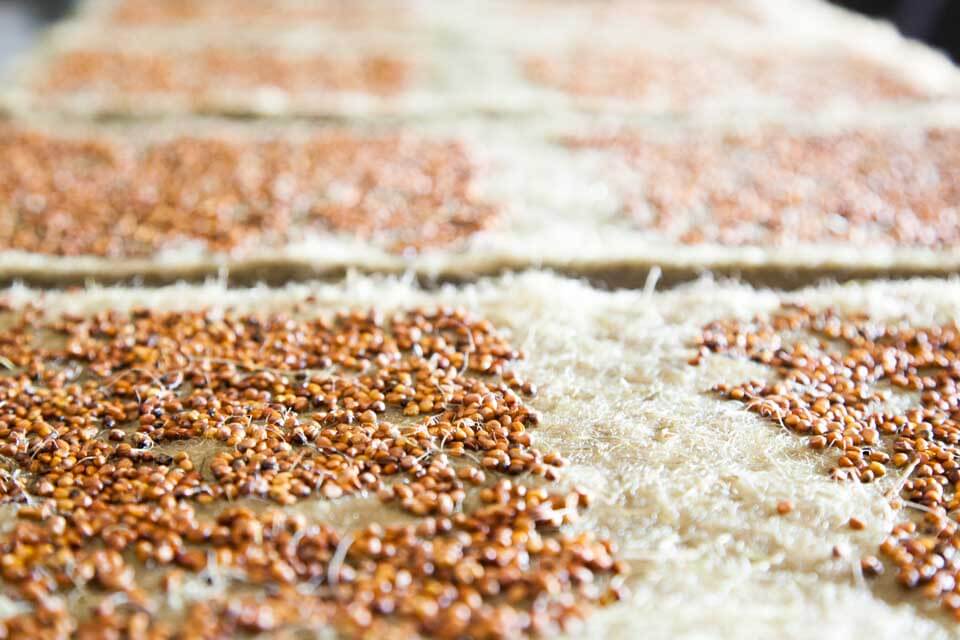Kevin Espiritu runs Epic Gardening, a gardening education platform focusing on hydroponics and microgreen production. He started microgreens production as a hobby in his home before scaling it to a side-job.
 When Kevin first got the idea to sell his microgreens, he faced a problem that many new farmers experience: sales.
When Kevin first got the idea to sell his microgreens, he faced a problem that many new farmers experience: sales.
Securing accounts can be a daunting task for new farmers.
The idea of sales as charismatic, polished, personality-driven tasks make them seem like an unreachable goal. (Who wouldn’t balk at that task?!)
Selling produce doesn’t require a personality change, though.
With a little bit of strategy and hard work, any new farmer can sell their greens.
Start small—microgreens are a great first sell
Microgreen sales are the perfect entry to learn the ropes of securing accounts. They’re attractive, popular, and easy to transport. Quick turnaround times make them a little more forgiving and flexible.
(Get the beginner’s guide to microgreens here.)

Kevin remembers the first time he tried to get restaurant sales for his microgreens. He recalled how the first impression was key to selling microgreens on a recurring basis.
How to make a great first impression on restaurant prospects
At the time, Kevin was growing microgreens as a hobby. “I had a couple of really colorful cool ones—red amaranth, which is a bright red, I had a cabbage that was green with a violet neon purple stem.”

“I said, ‘oh these look really cool, I bet I could sell them.‘ So I walked along one of the better areas of San Diego—restaurant row.”
Kevin did three things that allowed him to make a connection with chefs in the restaurants he visited.

How to get restaurant sales through a great first impression:
1. Go when it’s quiet.
He went during the quiet part of the day, between lunch and dinner. At this point, chefs are mostly doing prep. Go any other time, and at best they’ll be too busy to talk. At worst, you’ve interrupted an important task and permanently scarred your first impression.
2. Give liberal samples.
Skimping on samples can only hurt you. Kevin allowed chefs to take big samples to try out and experiment with. The idea is that once you start working with great-quality greens, it’s hard to go back.
The value of the account, said Kevin, far outweighs the cost of examples—even if you have to give 10 samples for every account gained. The cost of an entire tray is only $2–4, while the account could bring in anywhere from $50–150 per week.
3. Don’t bore them with technical details.
Chefs aren’t going to care about the meticulous details of how it’s grown. So don’t bore them with those details! Instead, tell them about what matters to them. Answer questions like:
- How soon can I get it?
- How much can I get?
- What’s the price?
- Is it fresh and/or local?
In short: think about it from their perspective.
How to get started with microgreens
Starting a farm is sometimes a big jump in lifestyle, but for those home-growers who just want to try out the ropes, microgreens is a great place to start.
You can learn more about starting microgreens here:



Why not put a wall in a restaurant kitchen and grow at your own facility and interchange the hangers when at peak for the chef. That way they have the supply they need and you didn’t waste your capacity.
Steven, that’s a great idea. A couple of farmers have actually done this either by renting the wall or delivering fresh Towers on a weekly basis. It’s not always possible (like if they don’t have space or the ability to care for it, or if the crop takes special harvesting) but definitely worth considering! Are you going to do it?